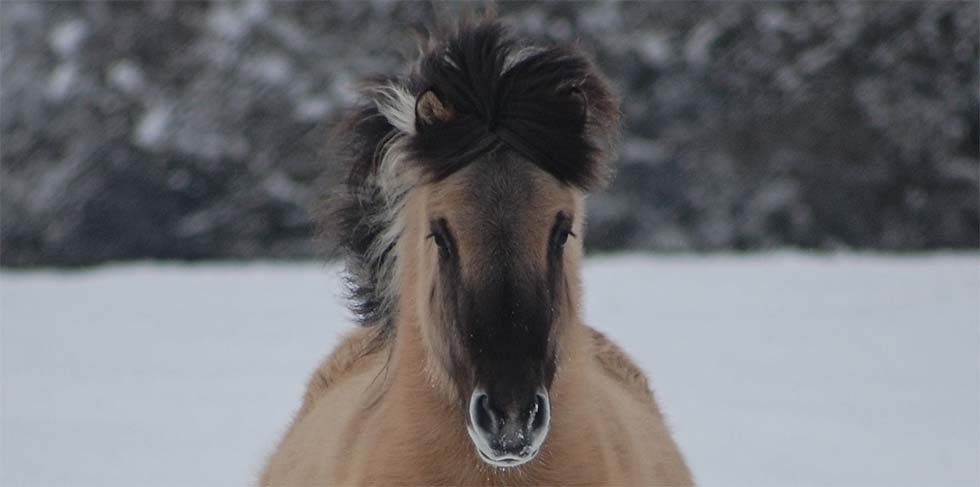The Icelandic is the original horse of the Vikings, taken to Iceland over a thousand years ago and pure bred ever since.
The Icelandic horse is rarely more than 14.2hh, or less than 12hh, though heights are not fixed. He is rather stocky, with a deep chest, expressive head, supple, well-set neck and strong limbs. When ridden, he should give an impression of courage and power, with a proud expression. The mane and tail are thick and plentiful. In the summer the coat is fine and shiny, but in winter the horse grows a long, thick coat with three distinct layers.
Icelandics can be literally any colour – bay, brown, chestnut, grey, skewbald, palomino or dun, with hundreds of variations of the usual colours. One much sought-after colour is silver dapple, in which the body of the horse is chocolate brown and the mane and tail are silvery white; check out some Icelandic horse colours.
As well as the usual gaits – walk, trot and canter – Icelandics also have the four-beat running walk known as “tölt”. This can be performed at any speed and is incredibly comfortable for the rider. Some Icelandics possess a fifth gait, flying pace, a two-beat lateral gait used for racing. Flying Pace makes great demands of both horse and rider, but is spectacular to watch and exhilarating to ride. Find out more about the gaits.
Icelandics should not be backed until they are at least four years old, and they are not considered mature until seven, but they are commonly still in light leisure riding activity at 25 or 30 years of age – the oldest one so far in Britain died at the age of 42. They are extremely versatile riding horses, bred to carry adult riders. (IHSGB Statement on Rider Weight and Icelandic Horses). They have short-coupled legs with very high bone density. Although small, they are always referred to as “horses” – there is no word in Icelandic for pony, and the Icelanders wish to honour their national breed, which holds the title “the most useful servant”. Although small in size, the Icelandic is a strong, powerful riding horse, bred to carry all members of the family in comfort and safety.
Icelandics are hardy, robust horses. Find out more about looking after them here.
All Icelandic horses should be registered in the Icelandic studbook, with their parentage traceable back to Iceland. Horse breeding is an art, and when you throw the extra gaits into the mix, that art becomes even more interesting!
There are several forms of competition dedicated to Icelandic horses, from local events all the way up to World Championships. To find out more about competitions for Icelandics, check out the Sport pages.
Icelandics are incredibly versatile and can turn their hooves to most things!

